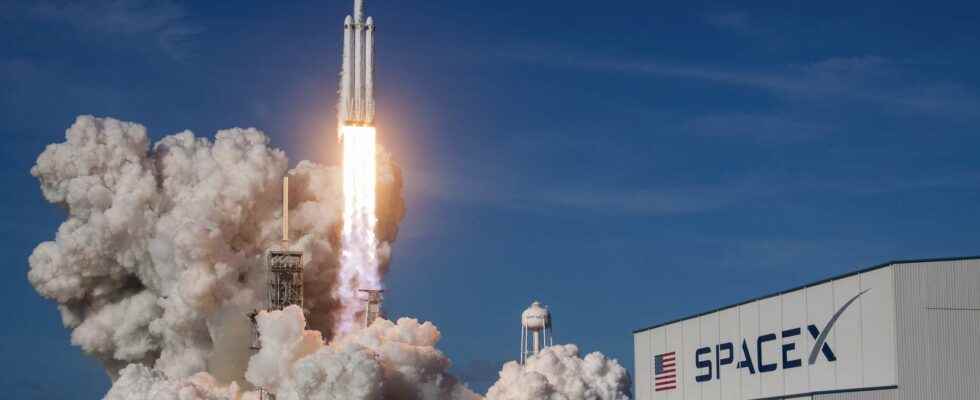SpaceX has signed a prestigious contract with NASA for the launch of Roman Space Telescope. This space observatory of dark energy and dark matter was identified in 2010 as a priority mission. At a cost of more than 4.3 billion, it should be launched in October 2026 aboard a Falcon Heavy, and will join the James-Webb not far away.
The Nasa chose the SpaceX’s Falcon Heavy to launch the space telescope Roman Space Telescope, the next big mission astrophysics American. Its launch is scheduled for October 2026 from the Kennedy Space Center in Florida. of a mass at the 4.2 ton launch, Roman Space Telescope (formerly known as WFirst) will be commissioned at Lagrange point L2a region of space located approximately 1.5 million kilometers from Earth in the opposite direction to the Sun. This is the same place where the James Webb.
A mission to better understand the Dark Universe
This unprecedented space mission aims to answer essential questions in the fields of research ondark energythe detection of exoplanets and infrared astrophysics. In particular, he must see the effects ofenergy dark and the black matter on a variety of objects, with as much precision as possible, in order to understand these two phenomena. It will answer fundamental questions about dark energy, such as whether the cosmic acceleration is caused by a new energy component or by the decay of general relativity on a cosmological scale.
This mission, which currently amounts to 4.32 billion dollars, was identified in 2010 as a priority mission by the Foresight Group of American Science Agencies ” Astronomy and Astrophysics Decadal Survey “. the Government Accountability Office (or GAO), the American equivalent of the French Court of Auditors, however, warned NASA against the risk of further delays for the program, citing several potential problems, some of which are related to the assembly of the primary mirror of 2.4m.
A launch contract that strengthens the commercial appeal of SpaceX
This $255 million launch contract was negotiated at a significantly higher price than most of the agency’s previous Falcon Heavy contracts. For example, the launch of the probe Europa Clipper (2024) was negotiated at $178 million and the launch of the GOES-U weather satellite in 2024 will cost NASA $152.5 million. In other words, NASA somehow “subsidizes” SpaceXwhich allows it to “sell off” its Falcon 9 in the commercial satellite launch markets and to market the Falcon Heavy between 90 and 100 million dollars.
But let’s be objective. NASA had no choice but to choose SpaceX. All the others launchers Americans who could have launched this mission are not available. This is the case ofAtlas 5 from the “overbooked” United Launch Alliance (ULA), and future Vulcan launchers from ULA and New Glenn from Blue Origin, still in development.
A desire to escape for the summer?
To celebrate the holidays as it should be, discover the Mag Futura at the preferential price of €15 instead of €19, i.e. a reduction of 20% !
On the program of this issue: a dive into the heart of 4 scientific themes that will mark 2022, from the Earth to the Moon:
- What mysteries does the Moon still hide from us?
- Will we soon be able to cure everything thanks to genes?
- How to feed the world without destroying it?
- Can artificial intelligence become truly intelligent?
What is Mag Futura?
- Our first paper journal of more than 200 pages to make science accessible to as many people as possible
- 4 major scientific questions for 2022, from the Earth to the Moon
- Home delivery*
*Delivery is made in France (excluding metropolitan France), Switzerland, Belgium.
Interested in what you just read?
